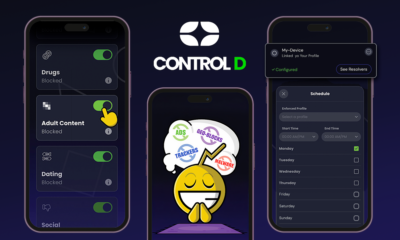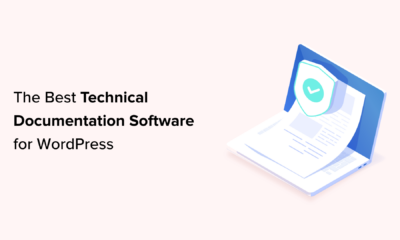TECHNOLOGY
Signs That You Need to Invest in HR Software & How to Do So

Are you feeling overwhelmed by the never-ending paperwork, endless spreadsheets, and manual processes that come with managing your company’s human resources?
It’s time to embrace the power of technology and invest in HR software. With the right software solution, you can streamline your HR processes, enhance efficiency, and empower your team to focus on what truly matters: your people.
In this article, we’ll explore the signs that indicate it’s time to make the leap and invest in HR software. Get ready to revolutionize your HR practices and take your organization to new heights!
1. Increasing HR Workload

As your business grows, so does the complexity of managing your workforce. If you find yourself drowning in a sea of paperwork, spending hours on administrative tasks, and struggling to keep up with employee data, it’s a clear sign that you need HR software.
By automating repetitive HR tasks like payroll processing, benefits administration, and employee record management, HR software frees up your time and allows you to focus on strategic initiatives that drive your organization forward.
2. Inefficient Recruitment and Onboarding Processes
Are you still relying on manual methods for recruiting and onboarding new employees? It’s time to upgrade your processes. HR software offers powerful recruitment and applicant tracking features, allowing you to streamline candidate sourcing, automate resume screening, and simplify interview scheduling. Moreover, it enables you to create personalized onboarding workflows, ensuring that new hires have a smooth and engaging transition into your company.
By investing in HR software, you’ll attract top talent, reduce time-to-fill positions, and enhance the overall employee experience.
3. Compliance and Legal Risks
Staying compliant with ever-changing labor laws and regulations is crucial for any organization. Failure to do so can lead to costly penalties and damage to your reputation. If you’re manually managing compliance-related tasks, it’s time to invest in HR software that keeps you up to date and helps you mitigate legal risks.
A robust HR software solution will provide built-in compliance features, automated reporting, and alerts for important deadlines, ensuring that your HR practices are in line with the latest regulations, giving you peace of mind.
4. Lack of Data-driven Decision Making
In today’s data-centric world, making informed decisions based on accurate insights is essential. If you find yourself relying on guesswork or incomplete information when it comes to workforce planning, performance management, or talent development, HR software can be a game-changer.
By centralizing employee data, generating insightful analytics, and providing real-time reports, HR software empowers you to make data-driven decisions that drive productivity, improve employee engagement, and optimize resource allocation.
5. Poor Employee Self-Service Experience
Is your HR department inundated with repetitive employee requests? Investing in HR software with self-service capabilities can dramatically improve the employee experience while reducing the administrative burden on your HR team. Through a user-friendly employee portal, your workforce can access and update personal information, request time off, enroll in benefits, and retrieve important documents, all without the need for manual intervention.
By empowering employees to self-serve, you foster a culture of transparency, efficiency, and empowerment within your organization.
How to Choose the Right HR Software for your Business?
When choosing the right HR software for your business, consider the following key points:
-
Assess Your HR Needs: Identify the specific features and functionalities required to meet your HR requirements, such as payroll processing, recruitment management, or performance evaluation.
-
Scalability: Evaluate whether the software can scale and adapt as your business grows, accommodating changes in employee numbers and organizational needs.
-
User Experience and Interface: Prioritize software that offers an intuitive and user-friendly interface, making it easy for both HR professionals and employees to navigate and use effectively.
-
Compatibility and Integration: Ensure that the HR software can seamlessly integrate with your existing systems, such as accounting or timekeeping software, to streamline operations and data management.
-
Data Security: Prioritize software that implements robust data security measures, such as encryption, regular backups, and access controls, to protect sensitive employee information.
-
Vendor Reputation and Support: Consider the reputation and track record of the software vendor, including their customer support offerings and the availability of training resources to assist with implementation and ongoing support.
-
Budget Considerations: Evaluate the pricing structure of the HR software, including any upfront costs, subscription fees, and additional charges for upgrades or support, to ensure it aligns with your budget.
-
Trial and Feedback: Take advantage of free trials or demos offered by the software providers to test the functionality and suitability of the software for your business. Additionally, seek feedback and reviews from other businesses in your industry who have experience with the software.
By considering these points and aligning them with your business needs, you can make an informed decision and select the right HR software that enhances your HR operations, improves efficiency, and supports your overall business objectives.
How to Pitch to your Stakeholders

When pitching to your stakeholders, consider the following paragraph points to effectively communicate your ideas and gain their support:
-
Clearly Define the Problem: Begin by clearly outlining the problem or challenge that your proposal aims to address. Explain the impact it has on the organization and its importance for long-term success.
-
Highlight the Benefits: Emphasize the benefits and positive outcomes that your proposal offers. Explain how it will improve efficiency, save costs, enhance productivity, or support strategic goals.
-
Provide Data and Evidence: Back up your claims with relevant data, statistics, and case studies. Present evidence that demonstrates the potential return on investment (ROI) or positive impact that your proposal can deliver.
-
Address Concerns and Risks: Acknowledge any potential concerns or risks that stakeholders may have. Address these concerns proactively by providing mitigation strategies or evidence of successful implementations in similar contexts.
-
Explain the Implementation Plan: Lay out a clear and realistic implementation plan. Outline the steps, timeline, and resources required for successful execution. Show that you have considered the practical aspects and have a well-thought-out approach.
-
Show Alignment with Organizational Goals: Demonstrate how your proposal aligns with the organization’s broader goals and objectives. Connect the dots between your idea and how it supports the overall strategy, mission, or vision of the company.
-
Engage Stakeholders: Engage your stakeholders by actively listening to their input, answering questions, and addressing their concerns. Show that you value their perspective and are open to collaboration and feedback throughout the process.
-
Highlight Competitive Advantage: If your proposal offers a competitive advantage or unique selling point, make sure to emphasize it. Explain how it positions the organization ahead of competitors or brings innovative solutions to the table.
-
Offer a Call to Action: Conclude your pitch with a clear call to action, such as requesting their support, approval, or participation. Summarize the key points and reiterate the benefits they will gain by supporting your proposal.
Remember to tailor your pitch to the specific needs and interests of your stakeholders. Craft a compelling narrative that engages their emotions and showcases the value and potential of your idea.
Conclusion
Recognizing the signs that you need to invest in HR software is the first step towards transforming your HR practices and unlocking the full potential of your organization.
From streamlining administrative tasks to improving recruitment processes, ensuring compliance, enabling data-driven decisions, and enhancing employee self-service, HR software brings countless benefits to your business. Embrace the power of technology and make your HR department a strategic partner in driving organizational success.
Invest in HR software today and witness the positive impact it has on your company’s efficiency and productivity.
TECHNOLOGY
Next-gen chips, Amazon Q, and speedy S3

AWS re:Invent, which has been taking place from November 27 and runs to December 1, has had its usual plethora of announcements: a total of 21 at time of print.
Perhaps not surprisingly, given the huge potential impact of generative AI – ChatGPT officially turns one year old today – a lot of focus has been on the AI side for AWS’ announcements, including a major partnership inked with NVIDIA across infrastructure, software, and services.
Yet there has been plenty more announced at the Las Vegas jamboree besides. Here, CloudTech rounds up the best of the rest:
Next-generation chips
This was the other major AI-focused announcement at re:Invent: the launch of two new chips, AWS Graviton4 and AWS Trainium2, for training and running AI and machine learning (ML) models, among other customer workloads. Graviton4 shapes up against its predecessor with 30% better compute performance, 50% more cores and 75% more memory bandwidth, while Trainium2 delivers up to four times faster training than before and will be able to be deployed in EC2 UltraClusters of up to 100,000 chips.
The EC2 UltraClusters are designed to ‘deliver the highest performance, most energy efficient AI model training infrastructure in the cloud’, as AWS puts it. With it, customers will be able to train large language models in ‘a fraction of the time’, as well as double energy efficiency.
As ever, AWS offers customers who are already utilising these tools. Databricks, Epic and SAP are among the companies cited as using the new AWS-designed chips.
Zero-ETL integrations
AWS announced new Amazon Aurora PostgreSQL, Amazon DynamoDB, and Amazon Relational Database Services (Amazon RDS) for MySQL integrations with Amazon Redshift, AWS’ cloud data warehouse. The zero-ETL integrations – eliminating the need to build ETL (extract, transform, load) data pipelines – make it easier to connect and analyse transactional data across various relational and non-relational databases in Amazon Redshift.
A simple example of how zero-ETL functions can be seen is in a hypothetical company which stores transactional data – time of transaction, items bought, where the transaction occurred – in a relational database, but use another analytics tool to analyse data in a non-relational database. To connect it all up, companies would previously have to construct ETL data pipelines which are a time and money sink.
The latest integrations “build on AWS’s zero-ETL foundation… so customers can quickly and easily connect all of their data, no matter where it lives,” the company said.
Amazon S3 Express One Zone
AWS announced the general availability of Amazon S3 Express One Zone, a new storage class purpose-built for customers’ most frequently-accessed data. Data access speed is up to 10 times faster and request costs up to 50% lower than standard S3. Companies can also opt to collocate their Amazon S3 Express One Zone data in the same availability zone as their compute resources.
Companies and partners who are using Amazon S3 Express One Zone include ChaosSearch, Cloudera, and Pinterest.
Amazon Q
A new product, and an interesting pivot, again with generative AI at its core. Amazon Q was announced as a ‘new type of generative AI-powered assistant’ which can be tailored to a customer’s business. “Customers can get fast, relevant answers to pressing questions, generate content, and take actions – all informed by a customer’s information repositories, code, and enterprise systems,” AWS added. The service also can assist companies building on AWS, as well as companies using AWS applications for business intelligence, contact centres, and supply chain management.
Customers cited as early adopters include Accenture, BMW and Wunderkind.
Want to learn more about cybersecurity and the cloud from industry leaders? Check out Cyber Security & Cloud Expo taking place in Amsterdam, California, and London. Explore other upcoming enterprise technology events and webinars powered by TechForge here.
TECHNOLOGY
HCLTech and Cisco create collaborative hybrid workplaces

Digital comms specialist Cisco and global tech firm HCLTech have teamed up to launch Meeting-Rooms-as-a-Service (MRaaS).
Available on a subscription model, this solution modernises legacy meeting rooms and enables users to join meetings from any meeting solution provider using Webex devices.
The MRaaS solution helps enterprises simplify the design, implementation and maintenance of integrated meeting rooms, enabling seamless collaboration for their globally distributed hybrid workforces.
Rakshit Ghura, senior VP and Global head of digital workplace services, HCLTech, said: “MRaaS combines our consulting and managed services expertise with Cisco’s proficiency in Webex devices to change the way employees conceptualise, organise and interact in a collaborative environment for a modern hybrid work model.
“The common vision of our partnership is to elevate the collaboration experience at work and drive productivity through modern meeting rooms.”
Alexandra Zagury, VP of partner managed and as-a-Service Sales at Cisco, said: “Our partnership with HCLTech helps our clients transform their offices through cost-effective managed services that support the ongoing evolution of workspaces.
“As we reimagine the modern office, we are making it easier to support collaboration and productivity among workers, whether they are in the office or elsewhere.”
Cisco’s Webex collaboration devices harness the power of artificial intelligence to offer intuitive, seamless collaboration experiences, enabling meeting rooms with smart features such as meeting zones, intelligent people framing, optimised attendee audio and background noise removal, among others.
Want to learn more about cybersecurity and the cloud from industry leaders? Check out Cyber Security & Cloud Expo taking place in Amsterdam, California, and London. Explore other upcoming enterprise technology events and webinars powered by TechForge here.
TECHNOLOGY
Canonical releases low-touch private cloud MicroCloud

Canonical has announced the general availability of MicroCloud, a low-touch, open source cloud solution. MicroCloud is part of Canonical’s growing cloud infrastructure portfolio.
It is purpose-built for scalable clusters and edge deployments for all types of enterprises. It is designed with simplicity, security and automation in mind, minimising the time and effort to both deploy and maintain it. Conveniently, enterprise support for MicroCloud is offered as part of Canonical’s Ubuntu Pro subscription, with several support tiers available, and priced per node.
MicroClouds are optimised for repeatable and reliable remote deployments. A single command initiates the orchestration and clustering of various components with minimal involvement by the user, resulting in a fully functional cloud within minutes. This simplified deployment process significantly reduces the barrier to entry, putting a production-grade cloud at everyone’s fingertips.
Juan Manuel Ventura, head of architectures & technologies at Spindox, said: “Cloud computing is not only about technology, it’s the beating heart of any modern industrial transformation, driving agility and innovation. Our mission is to provide our customers with the most effective ways to innovate and bring value; having a complexity-free cloud infrastructure is one important piece of that puzzle. With MicroCloud, the focus shifts away from struggling with cloud operations to solving real business challenges” says
In addition to seamless deployment, MicroCloud prioritises security and ease of maintenance. All MicroCloud components are built with strict confinement for increased security, with over-the-air transactional updates that preserve data and roll back on errors automatically. Upgrades to newer versions are handled automatically and without downtime, with the mechanisms to hold or schedule them as needed.
With this approach, MicroCloud caters to both on-premise clouds but also edge deployments at remote locations, allowing organisations to use the same infrastructure primitives and services wherever they are needed. It is suitable for business-in-branch office locations or industrial use inside a factory, as well as distributed locations where the focus is on replicability and unattended operations.
Cedric Gegout, VP of product at Canonical, said: “As data becomes more distributed, the infrastructure has to follow. Cloud computing is now distributed, spanning across data centres, far and near edge computing appliances. MicroCloud is our answer to that.
“By packaging known infrastructure primitives in a portable and unattended way, we are delivering a simpler, more prescriptive cloud experience that makes zero-ops a reality for many Industries.“
MicroCloud’s lightweight architecture makes it usable on both commodity and high-end hardware, with several ways to further reduce its footprint depending on your workload needs. In addition to the standard Ubuntu Server or Desktop, MicroClouds can be run on Ubuntu Core – a lightweight OS optimised for the edge. With Ubuntu Core, MicroClouds are a perfect solution for far-edge locations with limited computing capabilities. Users can choose to run their workloads using Kubernetes or via system containers. System containers based on LXD behave similarly to traditional VMs but consume fewer resources while providing bare-metal performance.
Coupled with Canonical’s Ubuntu Pro + Support subscription, MicroCloud users can benefit from an enterprise-grade open source cloud solution that is fully supported and with better economics. An Ubuntu Pro subscription offers security maintenance for the broadest collection of open-source software available from a single vendor today. It covers over 30k packages with a consistent security maintenance commitment, and additional features such as kernel livepatch, systems management at scale, certified compliance and hardening profiles enabling easy adoption for enterprises. With per-node pricing and no hidden fees, customers can rest assured that their environment is secure and supported without the expensive price tag typically associated with cloud solutions.
Want to learn more about cybersecurity and the cloud from industry leaders? Check out Cyber Security & Cloud Expo taking place in Amsterdam, California, and London. Explore other upcoming enterprise technology events and webinars powered by TechForge here.
-

 WORDPRESS7 days ago
WORDPRESS7 days ago13 Best HubSpot Alternatives for 2024 (Free + Paid)
-

 MARKETING7 days ago
MARKETING7 days agoAdvertising in local markets: A playbook for success
-

 SEARCHENGINES7 days ago
SEARCHENGINES7 days agoGoogle Core Update Flux, AdSense Ad Intent, California Link Tax & More
-

 SEARCHENGINES5 days ago
SEARCHENGINES5 days agoGoogle Needs Very Few Links To Rank Pages; Links Are Less Important
-

 SEO5 days ago
SEO5 days agoHow to Become an SEO Lead (10 Tips That Advanced My Career)
-

 MARKETING6 days ago
MARKETING6 days agoHow to Use AI For a More Effective Social Media Strategy, According to Ross Simmonds
-

 PPC4 days ago
PPC4 days ago10 Most Effective Franchise Marketing Strategies
-

 PPC5 days ago
PPC5 days agoBiggest Trends, Challenges, & Strategies for Success














